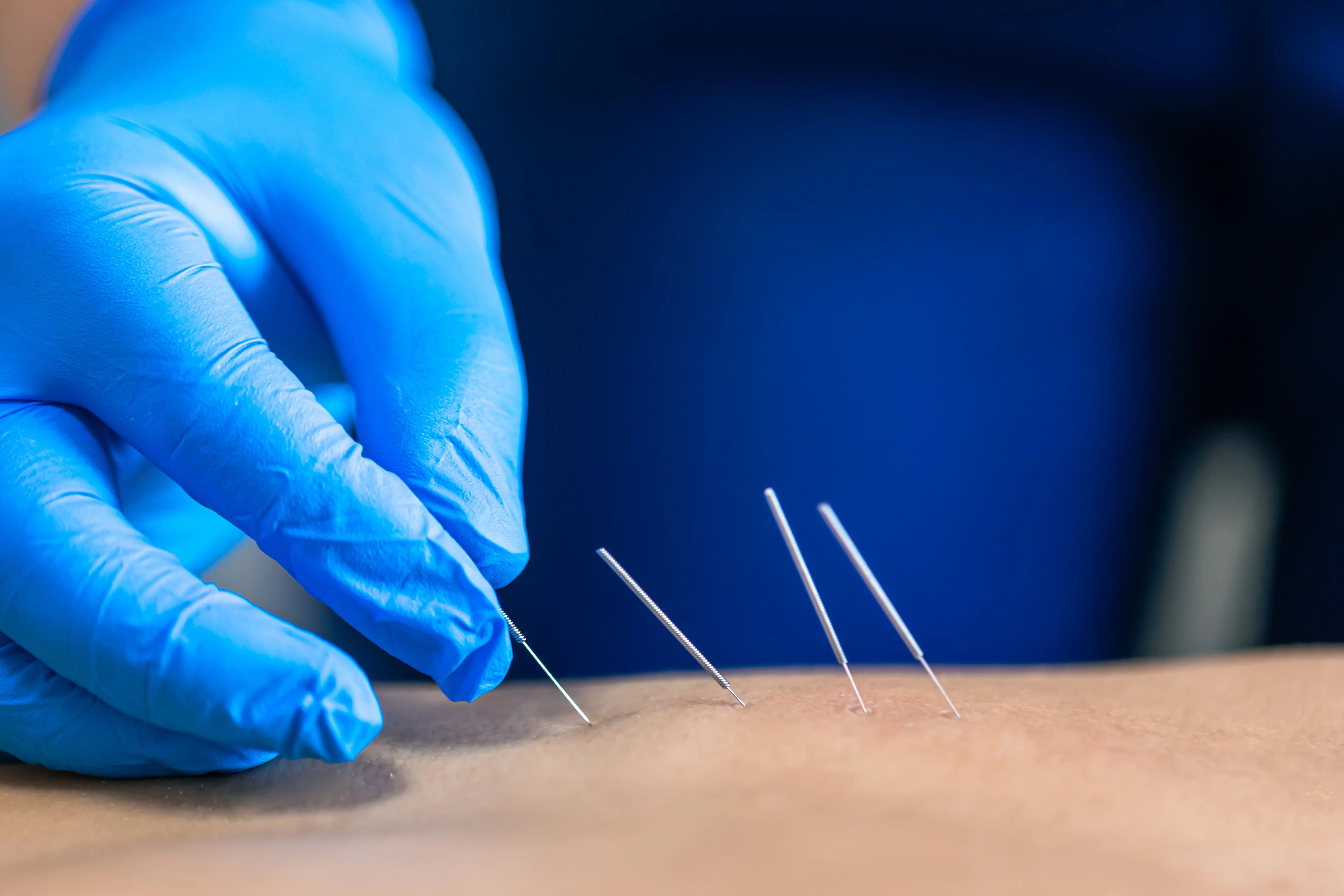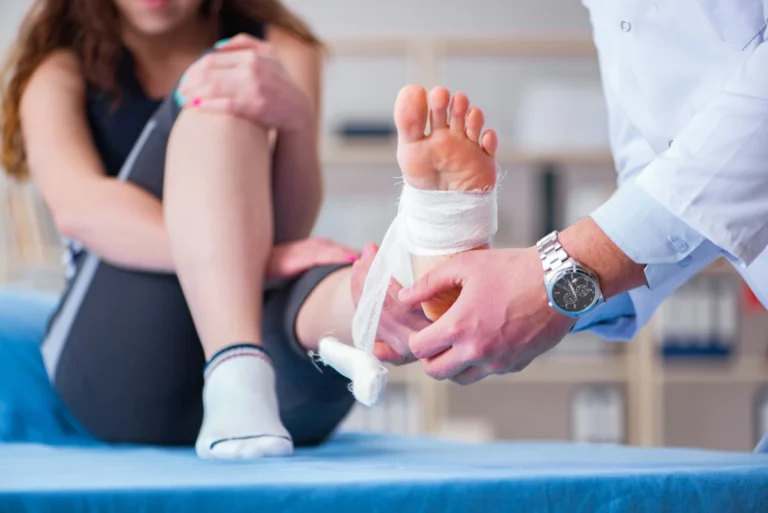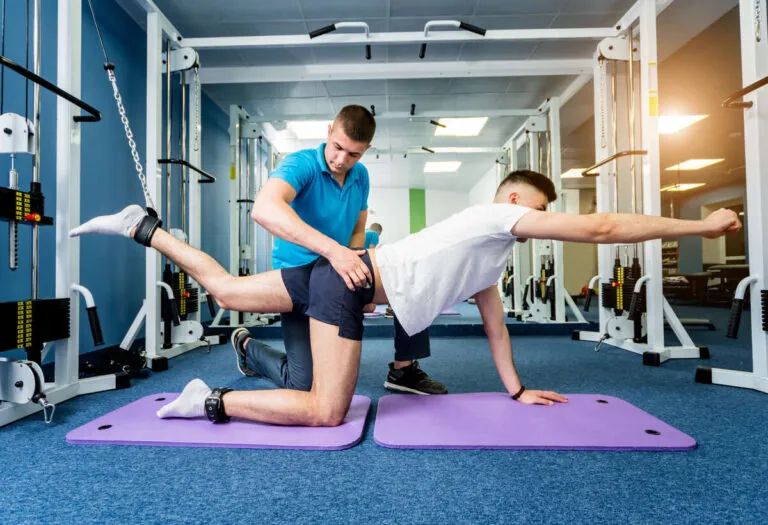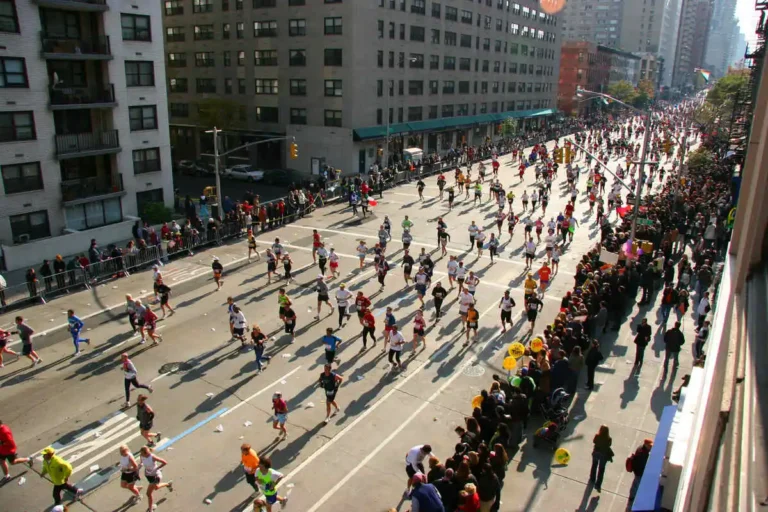Discover the Benefits of Dry Needling at
Bull City PT
Target pain at its source and get back to doing what you love.

Find a location that treats with Dry Needling
Conditions & Treatments
Transform Your Healing Journey with Dry Needling
Precision Therapy for Lasting Relief
Dry Needling is a specialized therapy that targets muscular tension and pain, offering a path to relief for those struggling with chronic discomfort or acute injuries. At Bull City PT, we’ve integrated Dry Needling into our repertoire of services, providing a targeted approach to alleviate pain, improve mobility, and enhance overall muscle function. By inserting fine, sterile needles into specific areas known as trigger points, our skilled therapists help release knots and reduce muscle pain in a minimally invasive manner, facilitating faster recovery and improved physical performance.
This therapy is particularly effective for those who have found limited relief from traditional treatments, offering a new avenue for healing. Dry Needling is not just about addressing symptoms; it’s about getting to the root of the pain and promoting the body’s natural healing processes. Whether you’re an athlete looking to optimize performance or someone seeking relief from the daily grind’s aches and pains, Dry Needling at Bull City PT can provide the breakthrough you’ve been searching for.
Symptoms Indicative of Dry Needling Therapy:
- Persistent muscle pain and soreness
- Tightness and stiffness in specific muscle groups
- Trigger points or “knots” in muscles
- Limited range of motion due to muscle tension
- Recurring injuries or chronic pain conditions
Why Consider Dry Needling?
- Seeking targeted relief from muscle pain and tightness
- Looking for complementary treatments to enhance physical therapy outcomes
- Interested in accelerating recovery from sports injuries or overuse
- Desiring a non-pharmacological approach to pain managemen
Clinics offering treatment for Dry Needling
FAQ about Dry Needling
-
Does Dry Needling hurt?
Sensations during Dry Needling vary, but most patients experience minimal discomfort. Some might feel a slight twitch response or a brief moment of discomfort as the needle targets the trigger point.
-
How does Dry Needling differ from acupuncture?
While both use thin needles, Dry Needling is based on modern Western medicine principles and is specifically aimed at treating musculoskeletal conditions by targeting trigger points. Acupuncture, on the other hand, is based on traditional Chinese medicine and focuses on balancing the body’s energy flow.
-
What conditions can Dry Needling help with?
The number of sessions varies depending on the individual’s condition and response to treatment. Some patients experience significant improvement after just one session, while others may require multiple sessions for optimal results.
-
How many Dry Needling sessions will I need?
The number of sessions varies depending on the individual’s condition and response to treatment. Some patients experience significant improvement after just one session, while others may require multiple sessions for optimal results.
-
Dry Needling Near Me: What Is It Most Effective For?
Overview of Trigger Point Dry Needling
Dry needling is a modern therapeutic technique used by physical therapists to treat musculoskeletal pain and dysfunction. It involves inserting thin, sterile needles into specific points in the muscles, known as trigger points. These trigger points are palpable, hyper-irritable spots within a taut band of skeletal muscle fibers. The goal is to release muscular tension, alleviate pain, and improve overall function.
The benefits of dry needling include helping to reduce muscle tension, improve range of motion, and speed up recovery by specifically targeting troubled muscles or trigger points.
This technique is different from acupuncture, as it is based on Western anatomical and neurophysiological principles rather than traditional Chinese medicine. Dry needling focuses primarily on targeting neuromuscular dysfunctions to restore muscle and joint health.
How Dry Needling Works
Dry needling is a technique used by physical therapists to treat muscle pain and movement impairments. The dry needling procedure involves the insertion of thin, solid needles into specific areas of the muscle to stimulate underlying myofascial trigger points. These trigger points are knotted, tender areas that develop in muscles, which are highly sensitive and can be painful when touched.
When a muscle is overused, it goes into an energy crisis where the muscle fibers don’t get an adequate blood supply. Without normal blood supply, muscle fibers don’t get the oxygen and nutrients needed to return to a normal resting state. The tissue near a trigger point becomes more acidic, sensitizing nerves and making the area sore and painful.
Stimulating a trigger point with a needle helps draw normal blood supply back to flush out the area and release tension. The prick sensation can also fire off nerve fibers that stimulate the brain to release endorphins, the body’s homemade pain medication. A local twitch response, a quick spasm of the muscle, can be a good sign that the muscle is reacting.
The benefits of dry needling include reducing muscle tension, enhancing blood circulation, and alleviating pain. Dry-needling physical therapy can help speed up the patient’s return to active rehabilitation. It is a form of modern Western medicine principles supported by research and is not based on traditional Chinese medicine.
During a dry needling treatment, a physical therapist will identify the trigger point and sterilize the area to be treated. The physical therapist will then insert the thin filiform needle through the skin and gently stimulate the trigger point until it spontaneously releases. This process may produce a brief twitch response followed by increased blood flow to the area. After the treatment, it is normal to experience some muscle soreness at the site and sense an increase in mobility.
Dry needling is a safe and effective way to achieve pain relief and improve muscle function. It is a non-surgical treatment that can be used to improve muscle functionality and promote relaxation throughout the body. Dry needling can be used to treat a wide range of conditions, including chronic pain, musculoskeletal pain, and movement issues.
Conditions Effectively Treated by Dry Needling for Chronic Pain
Dry needling is particularly effective in treating a variety of musculoskeletal conditions. It is known for providing relief from chronic pain, muscle stiffness, and joint tightness. Common conditions that respond well to this treatment include:
- Myofascial pain syndrome
- Tension headaches
- Temporomandibular joint (TMJ) dysfunction
- Plantar fasciitis
- Lower back pain
- Shoulder and neck pain
Dry needling is also effective in addressing referred pain, which can arise from trigger points that are not located at the site of the pain experienced by the patient.
Patients often experience significant improvements in pain and mobility after just a few sessions. For individuals searching for physical therapy dry needling near me, it’s crucial to consult with a qualified practitioner to ensure tailored treatment plans that suit their specific condition.
Comparisons to Other Treatment Methods Like Acupuncture
While dry needling and acupuncture both use thin needles, the similarities essentially end there. Dry needling is firmly rooted in Western medicine and is aimed at targeting myofascial trigger points to relieve muscle pain and dysfunction. Acupuncture, on the other hand, is based on traditional Chinese medicine and focuses on restoring energy flow (Qi) along the body’s meridian lines.
Dry needling often yields quicker results for those suffering from acute or chronic musculoskeletal issues, while acupuncture may offer broader benefits such as stre
-
Is Dry Needling Legal in North Carolina?
Understanding the legal status of dry needling is crucial for both patients and practitioners. In the United States, the regulation of dry needling varies significantly from state to state. While some states have embraced the practice within defined scopes, others have placed restrictions or outright prohibited it. Let’s delve into the current legal landscape to understand where California stands regarding dry needling.
Current Legal Status of Dry Needling in Various States
In the U.S., each state has its own set of regulations governing the practice of dry needling. States like Colorado and Virginia have clear guidelines promoting the practice, whereas states like New York and Hawaii have placed restrictions. These regulations often hinge on practitioner qualifications, such as whether the individual is a licensed physical therapist, chiropractor, or another healthcare provider.
Specific Regulations in North Carolina
North Carolina has established specific guidelines regarding the practice of dry needling by physical therapists. As of the most recent regulations, physical therapists in North Carolina are authorized to perform dry needling, provided they meet certain training and competency requirements set by the North Carolina Board of Physical Therapy Examiners. This aligns North Carolina with many other states that permit dry needling by physical therapists as part of their therapeutic services. Chiropractors in North Carolina should refer to the North Carolina Board of Chiropractic Examiners for specific regulations and guidance on performing dry needling within their scope of practice.
Professional Practice Guidelines
For those considering dry needling near me, understanding professional guidelines is imperative. Healthcare providers must adhere to state regulations and the professional standards set by their respective boards. This often means completing specific training and continuing education requirements to ensure patient safety and efficacy of treatment. Patients seeking dry needling should confirm that their provider is compliant with current state regulations and holds the necessary qualifications.
-
Is Dry Needling Expensive?
Cost Factors Influencing Dry Needling Pricing
The cost of dry needling can vary widely based on several factors. Firstly, the experience and qualifications of the practitioner significantly influence the pricing. A highly experienced professional is likely to charge more for their services. The location of the clinic also plays a crucial role; urban centers generally have higher costs compared to rural areas. Lastly, the number of sessions required to treat your specific condition will impact the overall expense. It’s advisable to discuss a treatment plan and associated costs upfront with your practitioner.
Comparison with Other Therapeutic Procedures
When comparing the cost of dry needling near me to other therapeutic procedures, it’s essential to consider the efficacy and time commitment. While the initial cost may seem higher than standard physical therapy sessions, dry needling often provides quicker and more effective relief from muscular pain. This can lead to fewer overall sessions and potentially lower long-term costs. Moreover, compared to surgical interventions or prolonged medication use, dry needling can be a cost-effective option.
Insurance Coverage and Out-of-Pocket Expenses
Currently, dry needling is not covered by insurance, which means patients are responsible for the full cost of each session. The price for dry needling typically ranges from $20 to $55 per session. However, at Bull City Physical Therapy, we believe in making dry needling more accessible by offering it at a significantly reduced rate of just $10 per session, ensuring that high-quality care remains affordable for all.
-
What Are the Cons of Dry Needling?
Dry needling, while widely regarded for its therapeutic benefits, does come with certain potential side effects and risks. Understanding these cons of dry needling can help individuals make informed decisions regarding their treatment options. In this section, we’ll delve into the possible downsides associated with dry needling therapy and provide insights based on patient experiences and expert comparisons with alternative therapies.
Potential Side Effects and Risks
While dry needling is generally considered safe when performed by a trained professional, there are inherent risks and side effects to be aware of. The most common side effects are minor and include muscle soreness, bruising, and slight bleeding at the needle insertion sites. Some patients might also experience fatigue or dizziness post-treatment.
Comparing Patient Experiences
Many patients have reported beneficial outcomes from dry needling, citing relief from chronic pain and improved muscle function. However, a subset of patients has reported feeling increased discomfort or ineffective results following the treatment. As with any therapeutic intervention, individual responses can vary significantly, which highlights the importance of discussing potential risks and benefits with a healthcare provider before undergoing the procedure.
Comparison with Alternative Therapies
Various other therapeutic options are available for treating muscle pain and dysfunction, such as acupuncture, physical therapy, and massage therapy. Acupuncture, for instance, shares similarities with dry needling but is grounded in traditional Chinese medicine. Patients who prefer a holistic approach often lean towards acupuncture, while those focused on muscular trigger points may choose dry needling. Physical therapy techniques such as manual therapy or therapeutic exercise can provide non-invasive alternatives with their own sets of pros and cons. Evaluating these alternatives alongside dry needling can assist patients in identifying the most suitable treatment for their specific conditions.
In conclusion, while dry needling offers significant potential benefits, it is crucial to weigh these against the possible risks and side effects. Consulting with a certified professional and considering personal health circumstances will help in making the most informed and safe decision regarding this treatment option.
-
Finding the Best Dry Needling Near You
Criteria for Selecting Reliable Physical Therapists
When searching for the best dry needling near me, it’s crucial to evaluate several key factors to ensure you are receiving high-quality care. Start by looking into the qualifications and experience of the practitioner. They should have specialized training in physical therapy dry needling and hold appropriate licenses. Membership in professional organizations can also be an indicator of their commitment to continual education and adherence to high standards.
Next, consider the clinic’s reputation. Look for testimonials and reviews from previous patients. Reliable practices often have a plethora of positive feedback that can give you insight into the quality of care, the effectiveness of treatments, and overall patient satisfaction. Don’t hesitate to ask for references or case studies that might provide additional assurances.
Testimonials and Reviews
Patient experiences can greatly influence your decision to choose the top practitioners offering chiropractor dry needling near you. Look for reviews that discuss the outcomes of the treatment, the professional demeanor of the practitioner, and the overall experience at the facility. Websites like Google Reviews, Yelp, and specialized health forums can be valuable resources for gathering this information.
Personal testimonials can also provide a nuanced perspective on the treatment efficacy. Take note of comments regarding pain relief, improved mobility, and any other benefits that resonate with your specific health concerns. If possible, visit the clinic’s website to read in-depth patient stories and see before-and-after treatment results.
Checking Qualifications and Practice Licenses
Validating the qualifications and licensing of the practitioners is essential for your safety and the effectiveness of the treatment. Ensure the individuals are certified in trigger point dry needling and possess up-to-date training credentials. Each state may have specific requirements for practicing dry needling, so verify that the practitioner is compliant with local regulations.
During your initial consultation, don’t hesitate to ask the provider about their education, certifications, and experience with similar cases. A reputable clinic will be transparent about their qualifications and more than willing to provide this information. For added peace of mind, you might also check with professional regulatory bodies to confirm the standing of your potential practitioner.
Ready to Experience the Relief of Dry Needling?
If you’re ready to explore a targeted approach to pain relief and muscle recovery, Bull City PT is here to guide you through the benefits of Dry Needling.
Contact Us Now to Schedule Your Dry Needling Session—Take the First Step Towards Lasting Relief.
Bull City PT Resources





